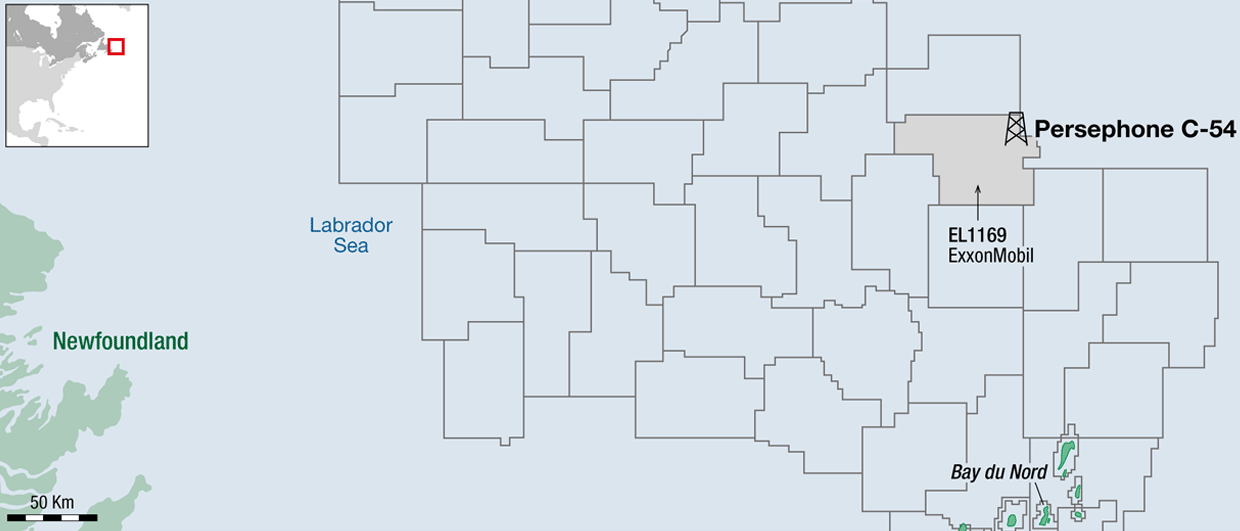Sometimes a map says more than a lengthy story. That is the case here. We plotted the exploration wells drilled on the Newfoundland and Labrador shelf on a bathymetric map and colour-coded the wells to the year they were completed. A nice picture emerges as a result.
First of all, it is clear that early exploration focussed on the shelf areas only. But, despite being limited by water depth, the geographical distribution of wells is quite impressive.
Then, from about the mid-1980’s, a geographical concentration of drilling takes place into the area of the Jeanne d’Arc Basin, where the only currently producing assets are located.
Chevron is the first company that moves to deeper water in 2007 through drilling Great Barasway, followed by Lona (Chevron) in 2010, Margaree (Chevron) in 2013 and Cupids (Equinor) in 2015.
But now, BP will move even further away from the Jeanne d’Arc Basin and is soon spudding Ephesus further to the northwest in around 1,300 m of water, testing an Eocene deep-water sandstone target.
More on this soon, as our cover story of the next issue will be on this well.


